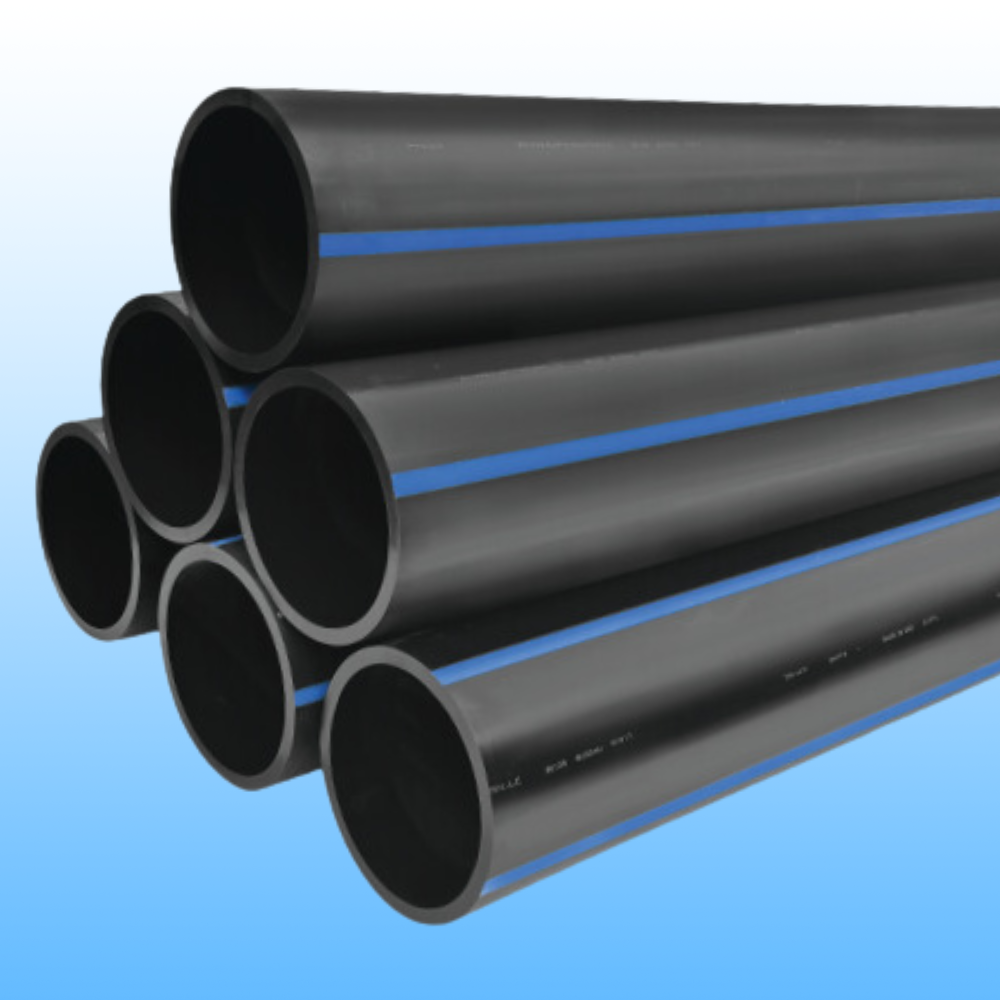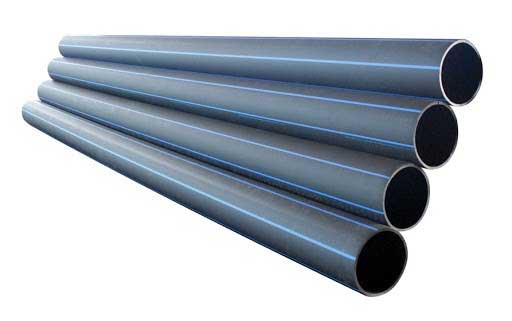Strengths of Choosing custom hdpe pipe manufacturing Midland TX for Tailored Solutions
Discover the Manufacturing Refine Behind High-Quality HDPE Pipeline and Its Applications
The production process of high-quality HDPE pipelines is detailed and methodical. It begins with the choice of raw materials that boost efficiency. Following this, ethylene goes through polymerization to create resin, which is after that shaped via extrusion. Quality control is extremely important, ensuring that the final item fulfills stringent standards. The trip of HDPE pipes doesn't end with manufacturing. Their applications across various industries disclose a more comprehensive significance worth taking a look at.
Understanding HDPE: Characteristics and Advantages

High-density polyethylene (HDPE) is a versatile polycarbonate understood for its durability and resistance to various ecological variables. This material exhibits excellent tensile toughness, making it appropriate for demanding applications. Its low-density framework contributes to a lightweight product, promoting convenience of taking care of and installment. HDPE also showcases amazing resistance to chemicals, which lessens degradation when exposed to extreme materials.
The material's low moisture absorption better improves its durability, making it perfect for use in pipelines and storage tanks. Furthermore, HDPE is resistant to ultraviolet (UV) radiation, making certain that items keep their integrity also when revealed to sunshine. Its flexibility allows for the production of detailed shapes without endangering toughness. The environmentally friendly nature of HDPE, typically originated from recycled materials, includes to its appeal, promoting lasting methods in production. In general, these properties and benefits make HDPE a recommended choice for different commercial and consumer applications.
Raw Material Selection for HDPE Production
The selection of resources for HDPE production is important to confirm the final product satisfies the preferred requirements and quality criteria. High-density polyethylene (HDPE) is largely generated from polymerized ethylene, stemmed from fossil gas such as natural gas or unrefined oil. The high quality of these feedstocks substantially influences the mechanical and thermal homes of the last HDPE.
Ingredients also play a considerable duty in boosting HDPE's performance, consisting of anti-oxidants, UV stabilizers, and colorants, which enhance longevity and resistance to ecological aspects. The selection procedure have to think about not just the chemical structure of the raw materials yet also their processing features to guarantee reliable manufacturing.
Additionally, the sourcing of raw materials should focus on sustainability and conformity with environmental laws, as accountable methods are necessary in today's market. Ultimately, careful raw product choice lays the foundation for generating high-grade HDPE pipes appropriate for varied applications.
The Extrusion Process: Shaping HDPE Pipe
The extrusion procedure plays a crucial function fit HDPE pipes, beginning with thorough material prep work techniques that ensure optimal circulation and consistency. Similarly crucial is the layout of the die, which directly affects the last dimensions and surface top quality of the pipeline. Together, these variables contribute significantly to the performance and quality of HDPE pipe production.
Material Preparation Techniques
Reliable manufacturing of HDPE pipes starts with precise material preparation techniques, particularly the extrusion process. Throughout this phase, high-density polyethylene material is very first dried out to remove dampness, guaranteeing optimal circulation features. The resin is then fed into the extruder, where it undertakes home heating and melting, changing right into a viscous state. This heating process is thoroughly controlled to keep the product's stability and efficiency. The liquified HDPE is compelled with a die, shaping it into a continuous pipe form. Appropriate temperature level monitoring throughout extrusion is important, as it directly impacts the product's residential properties and the end product high quality. Once shaped, the HDPE pipe is cooled and cut to defined sizes, all set for subsequent handling and applications.
Die Layout Value
Precision in die layout plays a crucial role in the extrusion process of HDPE pipelines. The die serves as the last shaping tool, directly influencing the pipeline's dimensions, wall surface thickness, and surface area coating. A well-designed die assurances uniform material circulation, lowering flaws such as abnormalities and weak points. The geometry of the die should be maximized to fit the certain homes of HDPE, including its viscosity and thermal behavior during extrusion. Additionally, the cooling rate of the material as it goes through the die can significantly impact the pipe's architectural stability. Consequently, buying advanced die modern technology is crucial for manufacturers aiming to produce top notch HDPE pipes that satisfy industry standards and client assumptions.
Quality Assurance Actions in HDPE Manufacturing
Although different aspects influence the high quality of HDPE pipe production, reliable high quality control measures are vital to assure consistency and dependability in the end product. Secret quality assurance methods include strenuous material inspection, confirming that the raw polyethylene fulfills recognized criteria for pureness and thickness. During the extrusion process, specifications such as temperature, stress, and cooling time are very closely kept track of to maintain dimensional precision and structural stability
In enhancement, post-production screening is important; suppliers typically perform hydrostatic tests to evaluate the pipeline's strength and resistance to pressure. Visual evaluations for surface problems even more improve quality control. Certification from relevant criteria companies, like ASTM or ISO, gives an additional layer of reputation. By carrying out these detailed quality assurance steps, makers can lessen problems, boost performance, and guarantee that the HDPE pipes satisfy the particular demands of numerous applications, inevitably resulting in customer contentment and rely on the product.
Applications of HDPE Pipe Throughout Industries
HDPE pipelines are made use of across numerous fields because of their resilience and versatility. In water distribution systems, they ensure effective shipment, while in wastewater management, they supply trusted options for waste transportation. In addition, farming irrigation networks gain from HDPE's resistance to corrosion and flexibility, making it a suitable option for modern-day farming techniques.

Water Circulation Solutions
A considerable number of sectors rely upon high-density polyethylene (HDPE) pipelines for effective water distribution systems. Understood for their sturdiness and resistance to deterioration, HDPE pipes are widely made use of in municipal water networks, farming watering, and commercial applications. Their lightweight nature promotes very easy handling and installation, minimizing labor expenses and time. Additionally, HDPE pipes can suit various stress levels, making them ideal for both reduced and high-pressure systems. hdpe pipe fittings Midland TX. The versatility of the product enables smooth combination right into existing framework, lessening the need for substantial excavation. In addition, HDPE's resistance to chemical leaching guarantees that the water provided continues to be safe and tidy, making it an optimal option for keeping the top quality of drinkable water across different industries
Wastewater Management Solutions
Effective water distribution systems also lead the way for innovative wastewater administration services, where high-density polyethylene (HDPE) pipes play a significant function. Renowned for their toughness and resistance to deterioration, HDPE pipes are excellent for delivering wastewater in different setups. Their versatility permits simple installation in complex environments, reducing the requirement for extensive excavation. In addition, HDPE's smooth indoor surface decreases friction, improving circulation prices and performance. These pipelines are likewise resistant to chemical leaching, ensuring that impurities do more info not endanger the surrounding atmosphere. Industries, communities, and treatment facilities significantly depend on HDPE pipes for their integrity and durability, making them a favored selection for modern-day wastewater administration systems. This adaptability underscores the critical relevance of HDPE pipes across numerous applications.
Agricultural Watering Networks
Agricultural irrigation networks profit significantly from using high-density polyethylene (HDPE) pipelines, which provide reliable and trusted water shipment to plants. HDPE pipes are lightweight, making them easy to transfer and install, while their versatility permits numerous configurations in diverse terrains. These pipelines show excellent resistance to rust, chemicals, and UV radiation, guaranteeing resilience in extreme farming settings. Furthermore, their smooth indoor surface area lessens friction loss, enhancing water flow and decreasing power expenses connected with pumping. The durability of HDPE pipes, commonly exceeding half a century, adds to reduce upkeep and replacement costs. Consequently, farmers progressively count on HDPE pipes to boost irrigation performance and promote lasting agricultural practices, inevitably leading to improved crop returns and resource conservation.
Future Patterns in HDPE Pipe Technology
As the need for sustainable and reliable framework grows, innovations in HDPE pipe innovation are poised to transform different sectors. Emerging trends consist of the combination of wise innovations, such as sensors and IoT abilities, which assist in real-time tracking of pipe conditions, lowering maintenance costs and stopping leaks. In addition, the advancement of sophisticated production strategies, such as 3D printing, is allowing the manufacturing of facility, customized pipeline designs that deal with specific job requirements.
Moreover, the concentrate on recycling and round economy methods is driving the innovation of HDPE pipes made from recycled products, enhancing sustainability. Boosted jointing techniques, such as electro-fusion and mechanical installations, are additionally boosting setup performance and dependability. The expanding focus on environmental policies is pushing producers to embrace greener manufacturing processes, making sure that HDPE pipelines not just fulfill sector criteria but also promote an even more sustainable future for facilities advancement.
Regularly Asked Concerns
Exactly How Does HDPE Contrast to Other Plastic Materials?
HDPE surpasses lots of other plastic products concerning sturdiness, chemical resistance, and flexibility. Its reduced density and high tensile strength make it suitable for numerous applications, usually going beyond alternatives in both efficiency and long life.
What Are the Environmental Effects of HDPE Manufacturing?
The environmental impacts of HDPE production include greenhouse gas emissions, energy intake, and potential pollution from manufacturing procedures. Additionally, improper disposal can lead to soil and water contamination, increasing concerns concerning long-lasting eco-friendly effects.
Can HDPE Pipeline Be Recycled?
Yes, HDPE pipes can be reused. Lots of facilities accept utilized HDPE for handling, transforming it right into new products. This reusing contributes to sustainability initiatives, minimizing plastic waste while preserving sources and power in the production cycle.
What Is the Life Expectancy of HDPE Pipes?

Exactly How Do Temperature Variants Influence HDPE Pipe Efficiency?
Temperature variations significantly impact HDPE pipeline efficiency, influencing versatility and stamina. Heats can bring about softening, while low temperature levels may trigger brittleness, eventually influencing the pipe's longevity and viability for numerous applications in diverse atmospheres.